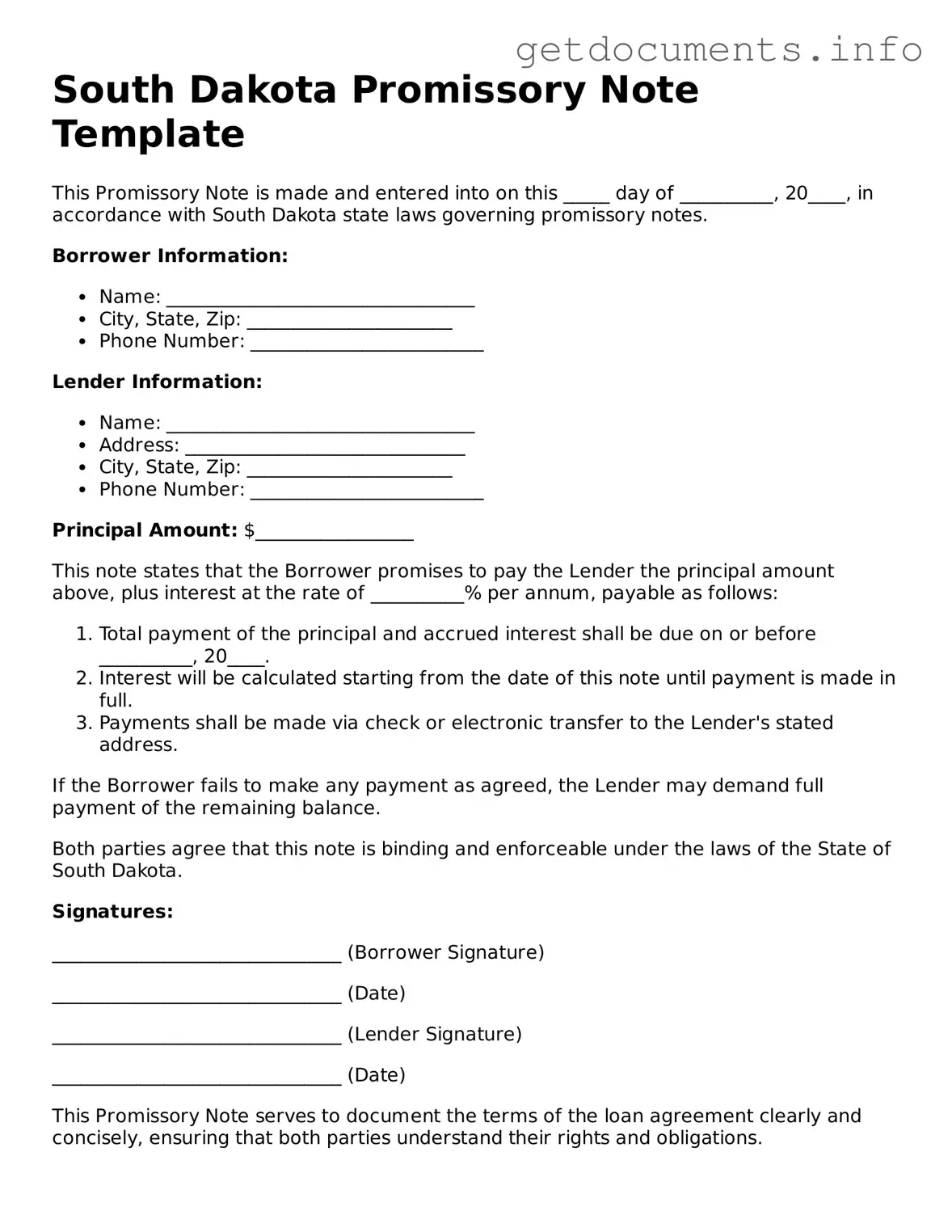Free Promissory Note Template for South Dakota
A South Dakota Promissory Note is a written promise to pay a specified amount of money to a designated person or entity at a future date. This form serves as a legal document that outlines the terms of the loan, including interest rates and repayment schedules. To get started, fill out the form by clicking the button below.
Access Promissory Note Editor
